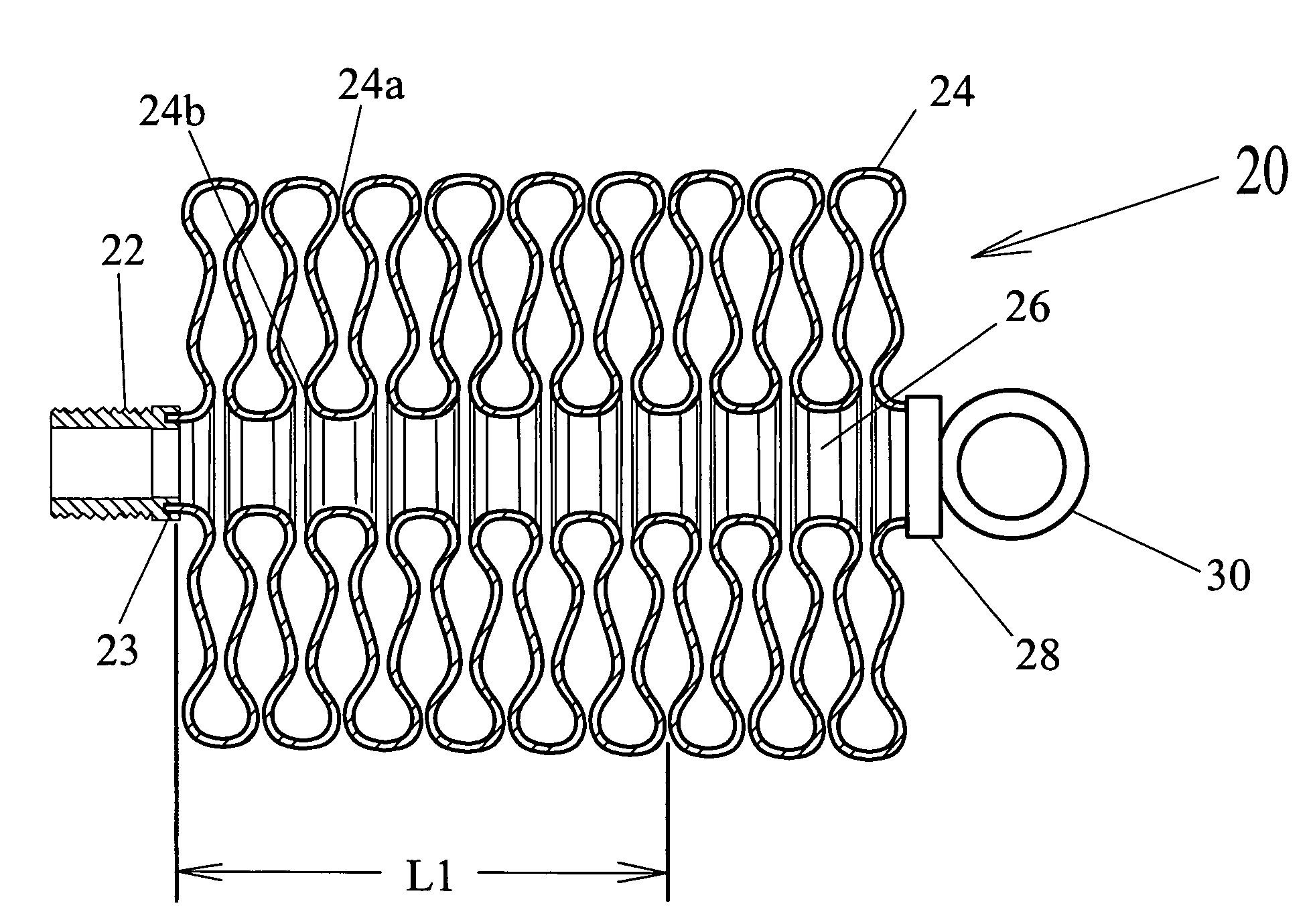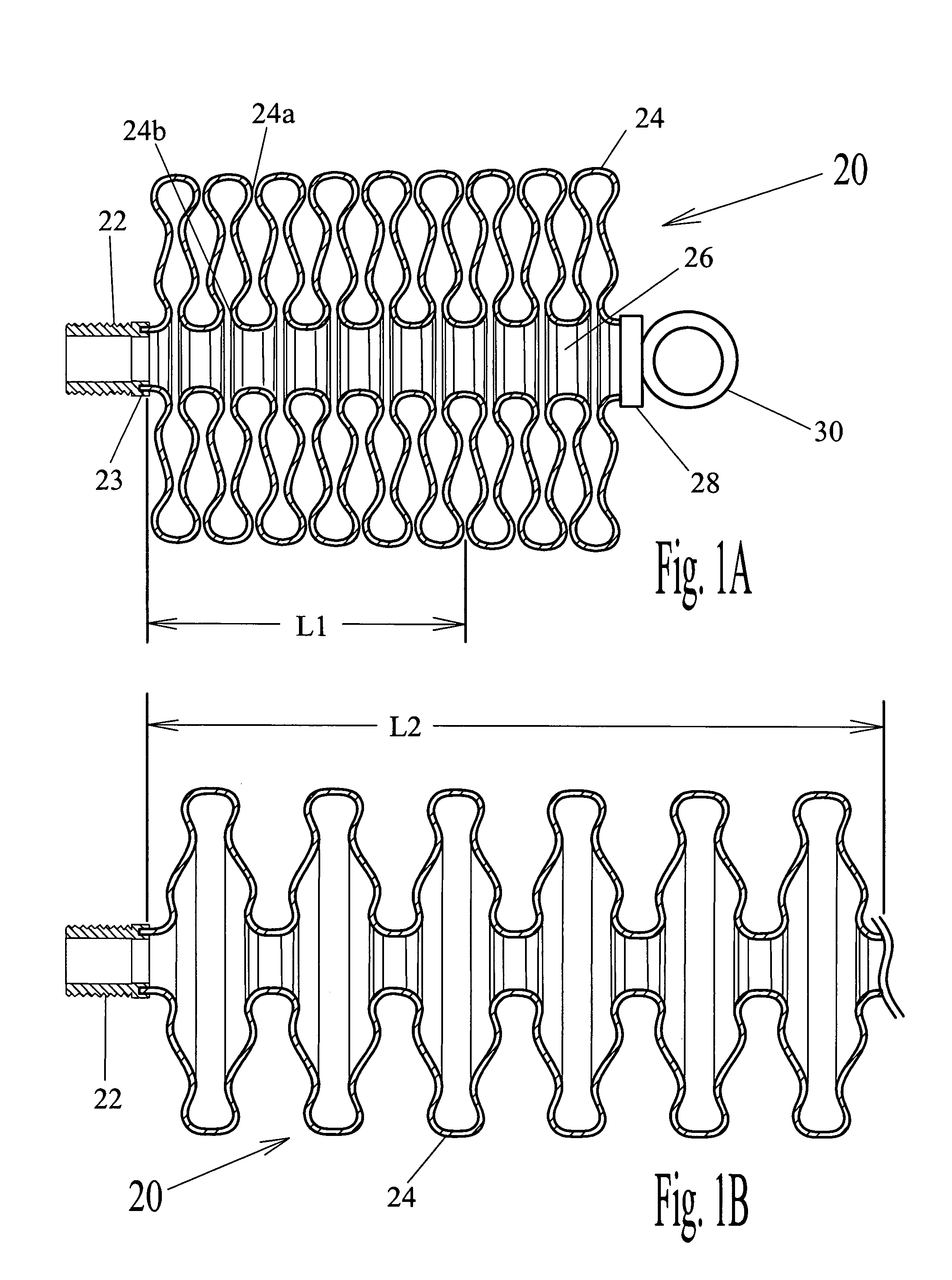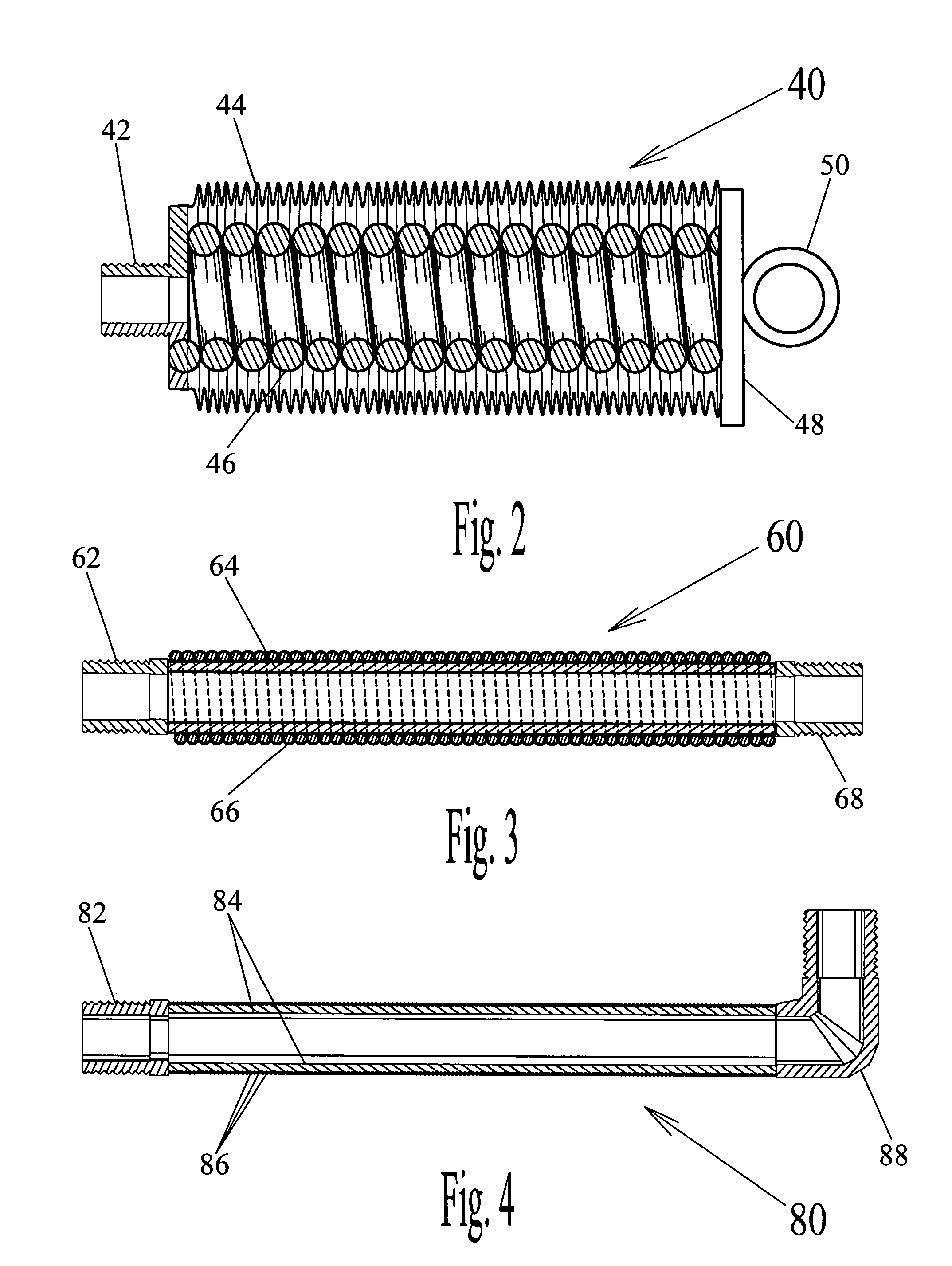Flexible hydraulic muscle
a hydraulic muscle and flexible technology, applied in the direction of flexible wall reciprocating engines, positive displacement engines, belt pistons, etc., can solve the problems of limited force, large system to provide large forces, limited force, etc., and achieve the effect of constant retracting for
- Summary
- Abstract
- Description
- Claims
- Application Information
AI Technical Summary
Problems solved by technology
Method used
Image
Examples
Embodiment Construction
[0039]In FIGS. 1A and 1B we see a flexible hydraulic muscle 20 comprising a fluid port 22, bellow 24, end seal 28 and attachment ring 30. As with the other hydraulic muscles disclosed in this patent, bellow 24 has a generally cylindrical shape, however, other cross-section shapes can be used besides round in the examples except FIG. 4 which requires a substantially round cross-section for support cords 86 to provide proper radial support. Fluid port 22 is designed to provide an anchor point for the muscle, while at the same time, providing a means to introduce and remove hydraulic fluid from bellow 24. Port 22 is shown here with a threaded connector, but other types of connectors can be used. End seal 28 and attachment ring 30 provide the second connecting point for the muscle. These two anchor points on each end of bellow 24 provide connection points to communicate contracting force from bellow 24 into useful work. End seal 28 is securely attached or bonded to the end of bellow 24 ...
PUM
 Login to View More
Login to View More Abstract
Description
Claims
Application Information
 Login to View More
Login to View More - R&D
- Intellectual Property
- Life Sciences
- Materials
- Tech Scout
- Unparalleled Data Quality
- Higher Quality Content
- 60% Fewer Hallucinations
Browse by: Latest US Patents, China's latest patents, Technical Efficacy Thesaurus, Application Domain, Technology Topic, Popular Technical Reports.
© 2025 PatSnap. All rights reserved.Legal|Privacy policy|Modern Slavery Act Transparency Statement|Sitemap|About US| Contact US: help@patsnap.com



